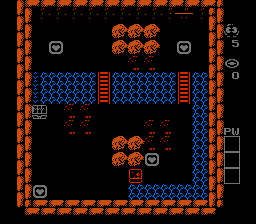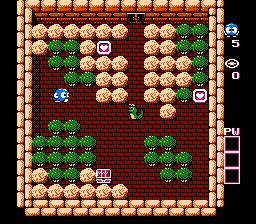Looking forward to the intercoding portion of this codec, it is very common for palettized graphic animations to use palette tricks to achieve certain graphical effects. One of the most prevalent such uses is screen fades– rather than suddenly showing the entire screen, set all the palette colors to 0 and then draw the graphics. After a certain time delta, adjust the palette to dim colors, wait, set the palette a little brighter, and repeat until the screen is at full color. Perform the inverse process for a fade out effect.
 fade-in frame #1 |

